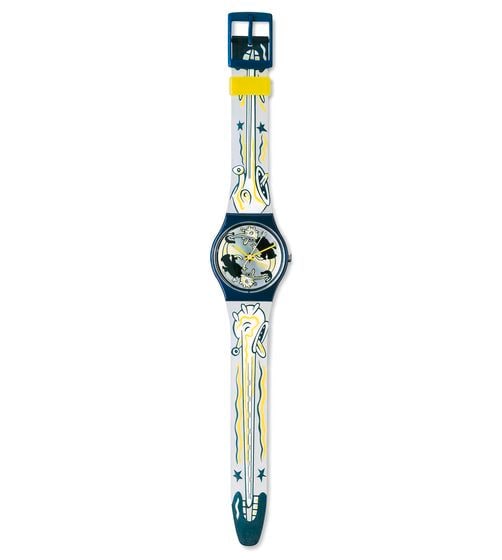

These sorts of claims probably aren't valid in the United States, which is why museums here don't usually prohibit photography-people can just scan their books or postcards. (Why not just put up a poll asking if users should be able to upload random pictures on the internet that don't have a clear copyright assignment on them? What a fucking joke.)

Well, the Foundation has apparently taken the stand that this is okay by them. Perhaps the point is to titillate us with the delicious irony of celebrating copyright infringement while simultaneously taking the view that even the "No Photography" sign is a form of property not to be reproduced without the permission that can never be had.' A member of staff explained that the typography and layout of the signs was itself copyrighted.Perhaps, just perhaps, this is actually a Dadaist show masquerading as a pop art show. I wasn't even allowed to photograph the "No Photographs" sign. Indeed, it seems every square centimetre of the National Portrait Gallery is under some form of copyright. No, the ban on pictures is meant to safeguard the copyright of the works hung on the walls - a fact that every member of staff I asked instantly confirmed. These signs are not intended to protect the works from the depredations of camera flashes (otherwise they would read "No Flash Photography"). Apparently they cut up magazines, copied comic books, drew trademarked cartoon characters like Minnie Mouse, reproduced covers from Time magazine, made ironic use of a cartoon Charles Atlas, painted over iconic photos of James Dean and Elvis Presley.Despite this, the programme does not say a word about copyright.There is, however, another message about copyright in the National Portrait Gallery: it is implicit in the "No Photography" signs prominently displayed throughout its rooms, including one by the entrance to the Pop Art Portraits exhibition. 'The excellent programme for Pop Art Portraits, the current exhibition at London's National Portrait Gallery, has a lot to say about the pictures hanging on the walls and the diverse source material the artists used to produce their provocative works. Cory Doctorow has some fun with their policy here: '.someone in a different post argues that National Gallery does not allow the public to take pictures. Things don't look too good for him from this POV either. It's also secondary infringement to transmit something from the UK to another country knowing that infringing copies will be made of it outside the UK and then re-imported ( - 24(2)). This Wikipedia user is specifically accused of this. Authorizing another to perform an infringing act in the UK is against UK law, even if the person giving the authorization is not in the UK. (Practically speaking I imagine it'll come down to something entirely different, such as taking up there offer of low resolution images in order to avoid the risk of a personal tragedy of a lawsuit). Presumably this, legally, comes down to a question of whether an infringing act happened in the UK. The NPC is also claiming a breach of database right and contract. It appears to be generally expected that this won't affect UK judgements.
#ZOOMIFY TWITHC FULL#
Click for full documentation.The bar for 'creative input' is fairly low (deciding where to stand in order to take a picture of a sculpture is enough), but a flatbed scan is clearly not enough, as the court explicitly found in the Bridgeman case.

When you’re finished, select File | Export | Render Video – but be warned, depending on the size of your video, and the ambitiousness of your edits, rendering the file could take hours. It’s possible to paint onto individual frames, and use Adjustment layers to apply enhancements and corrections to the whole file. You can open video clips in the same way as images, and move between frames via the Timeline panel. Recent versions of Photoshop support video as well as images. Naturally you can embed this into your own web pages for free, allowing convenient presentation of your images.
#ZOOMIFY TWITHC CODE#
File | Export | Zoomify produces a snippet of web code that presents your image within a Zoomify-branded image viewer, allowing the visitor to pan and zoom around your image within a convenient viewport. A shrunk-down version won’t show off the full detail, but a high-resolution one won’t fit comfortably in a browser window. Sharing large images on the web can be tricky.


 0 kommentar(er)
0 kommentar(er)
